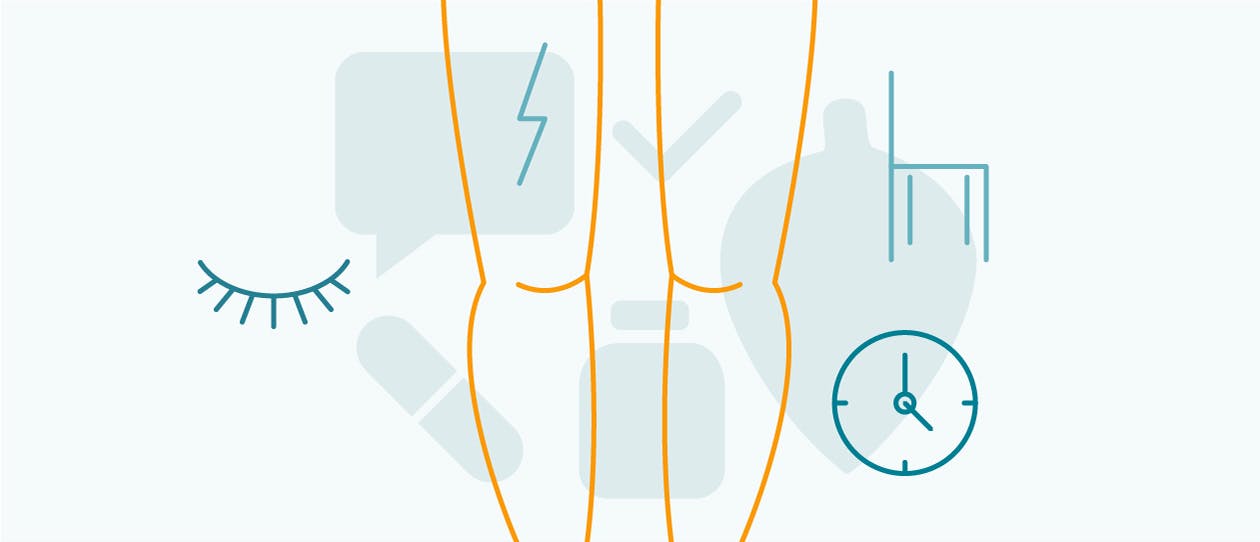A feeling sometimes described as like insects crawling inside the legs, the discomfort caused by RLS may also be referred to as tugging, burning, jittery or tingling.
As you'll see below there are a variety of ways the symptoms can be experienced.
- Ranging from discomfort to pain, the symptoms tend to be felt deep in the calves, though occasionally may be felt in other parts of the lower limb or in the arms
- The sufferer is overwhelmed by a desire to stand up or move around when lying or sitting and although this movement temporarily relieves the uncomfortable feeling in the legs, the situation also makes it difficult to rest or sleep
- Many patients have noted a twitching of the leg muscles during sleep. As this may occur every five seconds, these spasms severely interfere with sleep, and cause fatigue
- RLS is often mistaken for a variety of other disorders, including stress, insomnia and muscle cramps, making it common for symptoms to be present for many years before the condition is diagnosed
Some experience the symptoms of restless legs syndrome very rarely and may be RLS-free for weeks and even months at a time.


